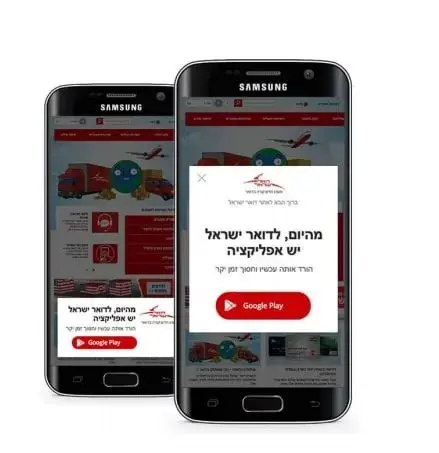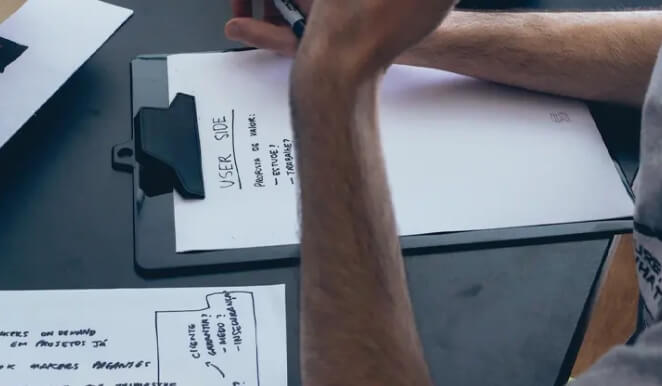Learn 15 effective strategies to increase app downloads on the App Store and Google Play. From App Store Optimization (ASO) to influencer marketing, discover actionable tips to promote your app, improve visibility, and grow your user base.
Congratulations! You’ve developed an amazing app. Now, we face the next challenge: How do you increase app downloads? After all, if your app isn’t downloaded and used, even the best creation becomes meaningless.
Standing out in the Google Play Store and App Store is a huge challenge—Google Play currently has over 2.68 million apps, and the App Store has more than 1.79 million apps. So how can you get your target users to download your app instead of others?
In this article, we’ve compiled 15 highly effective strategies to increase your app downloads. Let’s take a look! 🚀
1. Prioritize App Store Optimization (ASO)
App Store Optimization (ASO) is the method of optimizing your app to achieve higher rankings in app stores and increase conversion rates.
The higher your app ranks in the store, the more likely it is to appear during searches and get downloaded. Additionally, you can A/B test app icons, screenshots, videos, descriptions, etc., to continuously improve your app’s conversion rate.
ASO Optimization Checklist:
Understand your target audience
Create a unique app icon
Conduct keyword research and analysis
Write compelling app descriptions
Add promotional videos
Use screenshots with captions
Localize your app’s detail page
Continuously A/B test
Encourage users to leave ratings and reviews
Update your app regularly
Monitor your competitors’ strategies
Note: ASO is not a one-time process. You need to continuously adjust and update your keywords and visual elements to stay ahead of your competitors. 💡
2. Increase Downloads through App Localization
With the continuous growth of the mobile app market, the appeal of new markets is increasing, and more apps and games are succeeding in multiple countries worldwide.
Expanding your app to multiple countries can significantly boost your downloads. Since English proficiency is low in some countries, localization is key to entering these markets.
In fact, 8 of the top 10 iOS markets by download volume and 9 of the top 10 Google Play markets are non-English-speaking regions. App localization breaks cultural and language barriers, improving conversion rates and increasing your app's chances of being recommended.
There are two primary strategies to decide which countries to localize first:
Prioritize by Revenue: Target countries that generate more revenue, such as the U.S., Japan, Germany, and Saudi Arabia.
Evaluate App Market Size: Consider countries with large app store markets like China, India, Indonesia, Russia, Mexico, and Brazil.
3. Submit Your App to Multiple App Stores
While the App Store and Google Play are the largest distribution channels, the competition in these stores is intense. With Android's open platform allowing third-party app distribution, many other app stores offer opportunities and are an essential part of your app marketing and distribution strategy.
Submitting your app to other app stores can increase your visibility and downloads. Research by One Platform Foundation shows that submitting your app to lesser-known stores can increase downloads by 200% compared to Google Play.
You can also submit your app to overseas app stores like Samsung, Huawei, Xiaomi, Oppo, and Vivo. 🌍
4. Gain More Ratings and Reviews
Before downloading an unfamiliar app, users often check ratings and reviews. Positive reviews from other users are a great way to convince potential users that your app is worth downloading. Additionally, ratings and reviews impact your app's ranking in stores.
If users have a positive experience in your app (e.g., finishing a movie, winning a game), you can prompt them with a pop-up to rate or review your app.
To maximize good reviews, wait until users have used the app at least 3 times before prompting for a 5-star review. Also, limit the frequency of pop-ups to avoid annoying users.
Keep in mind, try to minimize negative reviews. While it's inevitable to get some, your goal should be to keep them to a minimum by providing the best experience and quickly addressing user concerns. 👍
5. Build a Website or Blog
You can also increase app downloads through a website. If you have a site, users can discover your app through mainstream search engines.
Additionally, your website can provide detailed information to convince users to download your app. You can show them how to use the app, how it benefits them, and display reviews, testimonials, case studies, news, and more. All of these factors can encourage engagement and downloads.
Categories like health & fitness, finance, sports, services, and entertainment can greatly benefit from SEO to boost app downloads.
Case Study: Headspace
Headspace, a meditation app, wanted to attract users who were interested in meditation or needed help with sleep. They created many blog articles around keywords like sleep, meditation, mindfulness, and mental health. As a result, they covered over 200,000 keywords and received nearly a million organic visits monthly. A portion of those visitors ultimately converted into app downloads.
6. Use Pop-Ups on Your Website
Pop-ups are an effective tool to promote your app on your website.

Case Study: Israel Post
Israel Post, a state-owned postal service, developed Android and iOS apps to avoid customers visiting physical offices. To encourage users to download the app, they used pop-ups on their website. After A/B testing for four months, they found that the pop-up triggered 6 seconds after a user entered the site increased Android app installs by 580% and iOS downloads by 980%. 📈
7. Website App Reviews and Promotions
Collaborating with well-known app bloggers to review your app can significantly increase awareness and downloads.
Here are some common steps:
Find suitable websites by searching for top-ranking articles related to your app's category.
Contact them, explain your app's uniqueness, and offer benefits in exchange for a review or guest blog post.
Tips: Instead of only promoting newly released content, try getting bloggers to naturally incorporate your app into high-ranking posts. This increases visibility and download potential.
8. Use Social Media
Social media is a fantastic platform for promoting apps, as over 4 billion people globally use social media platforms.
Basic steps for social media marketing:
Identify the platforms where your target users are most active.
Create engaging and useful content regularly. Avoid constantly pushing your app; users may unfollow you if you're too promotional.
Add calls-to-action or download buttons at the end of posts to encourage app installs.
9. Run Ads
Advertising is an effective strategy to acquire users and can significantly increase app downloads.
In overseas markets, advertisers typically use platforms like Google, Facebook, Apple Search Ads, Twitter, Instagram, and TikTok for more exposure and downloads.
You can evaluate and budget for these platforms, and also check which networks your competitors are using to make informed decisions. 📊
10. Email Marketing
Although email marketing is an old strategy, it remains a cost-effective and high-return method.
Studies show that for every £1 spent on email marketing, you can earn £42 in return. Plus, 49% of consumers want weekly promotional emails from their favorite brands.
Here are some common email marketing strategies for user growth:
Invite current email subscribers to beta test your app.
Include direct download links to the App Store or Google Play in your emails.
Notify users about new features, updates, or promotions to keep them engaged.
11. SMS Marketing
While SMS use has dropped, SMS marketing is booming, with engagement rates eight times higher than email marketing.
Here are some SMS marketing best practices:
Ensure your messages are clear and relevant.
Schedule messages at the right time, considering different time zones.
Allow users to opt-out to avoid being labeled as spam.
Personalize your messages for better engagement.
Include calls-to-action and interactive elements like short links. 📱
12. Encourage User Referrals
Since over 80% of users trust recommendations from friends and family, why not leverage this channel to promote your app?
Referral marketing is a powerful "free" strategy. Some common referral methods include:
In-app achievement sharing.
Unlockable content and daily tasks.
Turn-based or multiplayer game levels.
Earn in-app currency, coupons, or cash rewards for successful referrals.
13. Influencer Marketing
Influencer marketing has grown significantly, helping companies break growth barriers.
Consumers are more likely to try products recommended by influencers they follow. Identify suitable influencers on platforms like YouTube, Instagram, Twitter, and forums to promote your app.
14. Get Media Coverage
Contacting the media is a great way to get attention, but you need a compelling reason for them to cover your app.
You’ll have a better chance of getting media coverage if:
Your app is unique and provides value.
Your company is well-known or partnered with a big name.
Your app has won awards, like Google Play's Best App of the Year.
Your app fits current trending topics or events.
Prepare a complete media kit (download URLs, icons, screenshots, PDF presentations) before reaching out.
15. Create a QR Code for Your App
QR codes are a powerful tool for increasing app downloads. Here are a few common use cases:
Advertise using app store QR codes on magazines, billboards, TV ads, etc.
Place QR codes on product packaging, so users can scan to access additional features or services.
Add QR codes to your website, allowing users to scan and download your app directly.
Take Action for More App Downloads!
No matter how excellent and useful your app is, it won’t be downloaded by more people unless you actively promote it. In today’s competitive environment, finding the right strategies to promote your app and ensure more downloads is crucial for success.
Start implementing the strategies we’ve shared, always keeping your target audience’s interests at the forefront. 🌟







